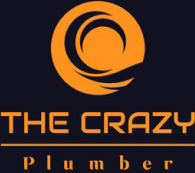The quality of a residential drinking water system is heavily influenced by the materials used in the pipes that deliver water throughout the home. Different pipe materials have varying impacts on water safety, toxicity, and overall health. Understanding these materials can help homeowners make informed decisions about their water systems. This article explores the different types of pipe materials, their potential toxicity, associated repair costs due to water damage, and when to call a water restoration service instead of just a plumber.
Types of Pipe Materials
Copper Pipes
Copper pipes have been used for decades due to their durability and reliability. They are resistant to corrosion and do not leach harmful substances into the water.
- Pros: Long-lasting, durable, and safe for drinking water.
- Cons: Expensive and may develop pinhole leaks over time.
- Potential Issues: High levels of copper can cause gastrointestinal issues if consumed in large quantities.
PVC (Polyvinyl Chloride) Pipes
PVC pipes are a popular choice for their affordability and ease of installation. They are used primarily for cold water lines.
- Pros: Cost-effective, resistant to corrosion, and easy to install.
- Cons: Not suitable for hot water lines due to potential warping.
- Potential Issues: Concerns about leaching chemicals such as vinyl chloride, which is a known carcinogen.
CPVC (Chlorinated Polyvinyl Chloride) Pipes
CPVC pipes are similar to PVC but are treated to withstand higher temperatures, making them suitable for both hot and cold water lines.
- Pros: More heat-resistant than PVC, durable, and affordable.
- Cons: Brittle in cold temperatures and prone to cracking.
- Potential Issues: Leaching of chemicals, although considered safer than PVC.
PEX (Cross-Linked Polyethylene) Pipes
PEX pipes are flexible and easy to install, making them a popular choice for modern plumbing systems.
- Pros: Flexible, resistant to scale and chlorine, and easy to install.
- Cons: Sensitive to UV light and not recyclable.
- Potential Issues: Concerns about the leaching of BPA (Bisphenol A) and other chemicals, though studies are inconclusive.
Galvanized Steel Pipes
Galvanized steel pipes were common in older homes but have largely been replaced by more modern materials.
- Pros: Strong and durable.
- Cons: Prone to corrosion and rust, leading to water contamination.
- Potential Issues: Corrosion can introduce lead and other toxic metals into the water supply.
Costs Associated with Water Damage Repair
Minor Water Damage
- Detection and Repair: Identifying and fixing minor leaks typically costs between $150 and $350.
- Cosmetic Repairs: Addressing minor cosmetic damage such as repainting or patching drywall can range from $200 to $500.
Significant Damage
- Structural Repairs: Repairing waterlogged floors, walls, or ceilings can range from $1,000 to $4,000.
- Mold Remediation: Mold removal and remediation can cost between $500 and $6,000 depending on the extent of the infestation.
Major Water Damage
- Extensive Restoration: Severe water damage requiring structural repairs, mold remediation, and extensive drying can exceed $5,000.
- Insurance Claims: Homeowners insurance may cover some of these costs, but deductibles and policy limits vary.
When to Call a Water Restoration Service
Extensive Water Damage
If water damage is widespread, affecting large areas of your home, a water restoration service is necessary to properly dry and repair the affected areas.
Health Concerns
Situations involving sewage backup, black water, or extensive mold growth require specialized cleaning to ensure safety and health. A water restoration service is equipped to handle these hazardous conditions.
Persistent Issues
If water damage persists despite initial repairs, professional restoration ensures comprehensive treatment. This includes thorough drying, mold prevention, and structural repairs.
Quick Statistics on Water Damage
Prevalence and Costs
- Frequency: 14,000 people in the U.S. experience a water damage emergency at home or work each day.
- Average Cost: The average cost of a water damage insurance claim is $10,234.
- Untreated Damage: Untreated water leaks can lead to damages costing up to $70,000, including structural repairs and mold remediation.
Insurance Impact
- Claim Frequency: Water damage accounts for 29% of all homeowner insurance claims, making it the second most common reason for filing a claim.
- Potential Savings: Early detection and repair of water leaks can save homeowners thousands of dollars in repair costs and insurance premiums.
Impact of Pipe Material on Water Quality
Lead Contamination
Lead contamination is a significant concern, particularly in older homes with lead pipes or lead solder. Lead exposure can cause severe health issues, especially in children, including developmental delays and neurological damage.
Chemical Leaching
Certain plastic pipes, such as PVC and PEX, may leach chemicals into the water. While regulatory standards limit these chemicals’ levels, long-term exposure remains a concern for many homeowners.
Biofilm Formation
Some pipe materials, particularly those with rough interior surfaces like galvanized steel, can harbor biofilm. Biofilm is a layer of bacteria that can affect water taste and quality, and in some cases, lead to health issues.
Choosing the Right Pipe Material for Your Home
Factors to Consider
- Water Quality: Consider the potential for chemical leaching and the impact on water taste and safety.
- Durability: Choose materials that withstand your local climate and water conditions.
- Cost: Balance the initial installation cost with long-term maintenance and replacement costs.
- Environmental Impact: Consider the environmental footprint of the materials used.
H3: Recommendations
- Copper: Ideal for longevity and safety, though more expensive.
- PEX: Cost-effective and easy to install, with fewer concerns about chemical leaching compared to PVC.
- CPVC: Suitable for both hot and cold water lines, offering a balance between cost and performance.
Understanding the different types of pipe materials and their impact on water quality is essential for maintaining a safe and efficient residential drinking water system. By recognizing the signs of water damage and knowing when to call a water restoration service, homeowners can prevent extensive damage and costly repairs. Staying informed and proactive ensures the longevity and safety of your home’s water system, protecting both your health and investment.







